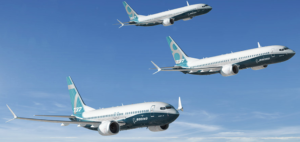Subscription Required
By Vincent Valery
Introduction
Jan. 27, 2020, © Leeham News: The Boeing 737 MAX crisis appears headed for resolution within a few months.
Stephen Dickson, the administrator of the Federal Aviation Administration, told American, Southwest and United airlines the MAX could be recertified by summer. This is the first time the FAA suggested a timeline—though anything could change this.
However, the entire commercial airline ecosystem has even less visibility on another key topic: once the 737 MAX returns to service, will airlines and lessors place new orders for what was Boeing's best-ever selling aircraft?
Whether the 737 MAX can accumulate a meaningful amount of new orders will have far-reaching consequences on Boeing’s finances and product strategy. As outlined in a previous LNA article, it might take until 2022 at the earliest to return to the intended production rate (57/mo) before the grounding.
Even if not many airlines cancel their 737 MAX orders, Boeing will need to accumulate sizable new orders to keep the assembly line busy through the 2020s. Any clean-sheet aircraft design would only be ready in the late 2020s at the earliest. Boeing CEO Dave Calhoun expressed confidence in regaining the market share Boeing had before the grounding.
Is Calhoun’s optimism justified?
The most reliable market to accumulate new orders is the replacement of aging aircraft. In this article, we come up with a conservative estimate of the number of aircraft airlines still need to order or lease to replace older airframes. We will analyze the breakdown among customer types, as well as timelines.
Summary
- A significant number of aging narrowbody aircraft to replace;
- Different order and replacement mix at Airbus and Boeing;
- And airline fleet types;
- Concentrated order and replacement opportunities;
- Replacement needs timelines.


